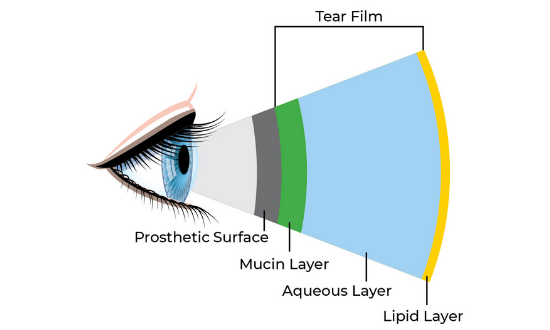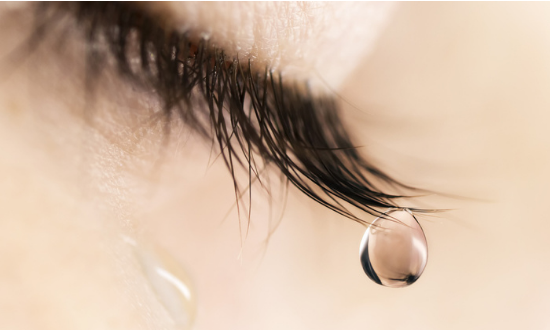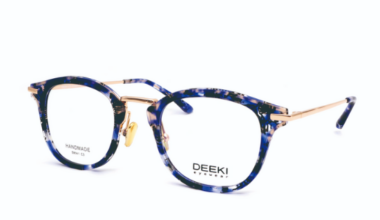Did you know? Women cry up to 65 times a year wherein men cry up to just 17 times a year! Well, we may never know, why? Certainly, their tear secretion is intact.
As we already know, water is the core component of our body. The right amount of water is required for hydrating our eyes as well. However, even our eye has its own tear cycle.
Let us understand the complete process of the composition of tears, types of tears, tear film structure, tear secretion, tear distribution & the tear excretory system or the tear drainage system of the eye with all the lacrimal apparatus parts that help in maintaining the tear cycle. We will also know about the conditions that may occur if any of the parts have any disorders.
TEARS
Let us start with a few questions that come to everyone’s mind.
What are tears?
The fluid secreted by the eyes to nourish itself is Tears. It maintains the harmony between the components of the eye and the eye’s moisture content.
How many tears are produced daily?
Well, in a day 0.75 to 1.1 gm. of tears are secreted. In other words, 10 ounces are secreted each day at a rate of 2 microliters each second. However, this amount decreases with age.
What are tears made up of?
Tears are mostly water with some salt, fatty oils, and a variety of proteins. Because of proteins crying is considered healthy for the eyes. These proteins contain Lactoferrins, lacrimal secretory IgA, antimicrobial molecules, etc. The presence of sodium is what makes tears taste salty. Tears contain various minerals like magnesium, calcium, potassium, and more. Further in this blog, you will learn about the composition of the tear film.
Why do our eyes get tears?
Tears are produced for a variety of reasons but mainly for hydration, protection, and easy movement of the eye by creating a coating with various substances called the tear film.
Just like a transparent screen guard of your phone that protects the screen, the fluid produced by the eyes protects the Cornea and visible part of the Sclera.
What are the different types of tears?
- Reflex tearing: Produced by external stimulus, foreign body, pain, or other factors
- Basal tearing: Produced & spread out evenly to keep the eyes moist.
- Hyper tearing: Caused by conditions like dry eyes, inflammation in glands or punctum or so.
- Emotional tearing: It is often asked by people, “Why do humans cry?” Well, people cry due to many emotional reasons. This is also a type of reflex tearing triggered by brain impulses via nerve endings. It activates the tear glands producing excessive tears overflowing from the eyes.
- Infant tearing: Various epidermal growth factors control tear secretion. Tear secretion in newborns is excessive. This is because the nervous system is not developed hence; babies tend to tear without weeping. However, with age, this condition overcomes naturally in most cases.
TEAR FILM
Definition
The Precorneal Tear film or fluid is the thin coating of constantly & naturally produced fluid by the lacrimal glands & meibomian glands serving various purposes.
Functions of the tear film
- The interaction between the air and tear film is responsible for 2/3th of the eye’s overall refractory power.
- Maintains moisture & facilitates eye movement.
- Nourishes & protects the cornea & also lubricates the surface of the eye.
- Discards waste and external objects or foreign bodies from the surface along with blinking.
- Kills bacteria and prevents the reproduction of micro cysts.
Tear film covers a 1-3 square cm area. The thickness of the tear film is 2.7-11micro m and is primarily due to the aqueous humor secretions.

Layers of the tear film
Around 90% of the film consists of an aqueous portion known more often as tears. There are, however, two other essential components i.e., lipid and mucus. Thus it is often referred to as the three-layered precorneal tear film as the tear fluid.
- The lipid layer: It prevents the overflow of tears & locks the moisture within.
- The layer of Aqueous humor: It comprises water & proteins & behaves as a physiological membrane that keeps away most eye infections.
- Mucosal layer: A hydrophilic coating is served by the mucous layer that secretes mucin.
THE LACRIMAL APPARATUS ANATOMY

The precorneal tear film is formed and discarded by the lacrimal system of secretion and excretion. By controlling the volume of tear fluid in the eye and distributing it all over the ocular surface, the eyelids play a significant part in the delivery of the tear fluid.
The tear film is a dynamic fluid coating that protects the corneal surface. Its primary purpose is to maintain the epithelium of the cornea moist, thereby maintaining the eye’s most effective refractive process.
The right balance and stableness of the tear film rely on the three main systems i.e., the secretory system, the distribution system, and the excretory system. Various small to big lacrimal glands play contribute to the effective functioning of these systems.
THE SECRETORY SYSTEM
The stability of tear film depends on the effectiveness of the tear secretion. This system defines, “where do the tears come from?”

Secretion of Aqueous: Above the upper outer orbit and underneath the eyebrows are lacrimal glands or the tear secreting glands. The function of the lacrimal glands is to produce reflex (stimulated) tears or aqueous fluid only. The almond-shaped lacrimal glands are activated when the nerves on the surface of the eye are exposed to wind, excess light or when the emotions are intense such as laughing hard or crying. Glands of Krause and Wolfring are supporting glands that also produce aqueous fluid. The lacrimal gland secretes aqueous through various excretory ducts in the superior fornix of the eye into the conjunctival sac. The lipid layer is produced by the Meibomian glands and the goblet cells produce the mucus layer.
Secretion of Lipid: Glands located below the lower eyelid also known as the conjunctival sac produce the basal tear or the unstimulated tears. These are required to maintain the moisture of the eye. During basal tearing, the aqueous fluid is produced by supporting lacrimal glands in the conjunctival sac itself.
All the fluid is collected in the grooves between the inner eyelids and the surface of the eye. In the conjunctival sac, the aqueous liquid is covered between the mucus and lipid layer.
After the secretion comes to the distribution of the tears.
THE DISTRIBUTION SYSTEM
Blinking plays a vital role in the distribution of the tear. Normally, between 15 – 30 seconds of blinks, the tear film starts to evaporate thus arising a need for secretion and distribution to prevent dry spots.
With each blink, the components produced by the lacrimal glands, meibomian glands, and the other glands are mixed and spread out in a thin layer on the surface of the eye.
Per-minute, the eye blinks approximately 5 to 20 times. Per blink takes no more than 0.5 seconds.
Process of distribution
- Closing of the eye: As the eyelids close with a blink, the thin used tear film squeezes between the eyelids getting wiped into the conjunctival sac. Here, the lower lid works like a roller pushing all the remains of the tear film along towards the puncta. Contaminated mucus typically thread-like is also rolled to the upper or lower fornix.
- Reopening of the eye: With the reopening, the aqueous layer instantly spreads over the ocular surface and a thin lipid layer spreads over it. The aqueous layer thickens until the tear supply for the formation of the tear film reduces.
- Tear film breaks up: Excess water and used tears are drained from the eye before blinking. However, between a few blinks, the tear film begins to become thin forming what we know as dry spots. Unless these spots get moisture again with a blink, they will enlarge, and eventually, the entire ocular surface will become dry.
THE EXCRETORY SYSTEM
Blinking is important for the effective functioning of the excretory system of the eye as well. It is said that almost 90% of the fluid is excreted by the eye normally, the remaining 10% fluid gets evaporated between the blinks.

The parts of the eye such as the puncta, the lacrimal canals, the lacrimal sac, and the nasolacrimal duct that forms the excretory system are placed in the inner corner of the eye that connects with the nasal cavity. Each plays a vital role. However, the drainage happens through the upper and lower puncta. It is said that the lower puncta are more active due to the gravity that helps in more excretion. Although, in case if one of the puncta is non-functional then the functional puncta does all the drainage.
Drainage process
The drainage of tears from puncta to nasal cavity happens in the following steps along with blinking:
- As the blinking starts, the puncta close, and the lacrimal canals and the lacrimal sac begin squeezing. This action causes some level of vacuum that clears used previous tear fluid remains as eyelids reverse the blinking action and start to open.
- During the opening of eyelids, the puncta remain closed creating more pressure in the canals. When the eye is just about one-third open the puncta opens up instantly and all the fluid is drained down the canals due to the suction created by the pressure.
- The fluid gets collected in the lacrimal sac and from there due to the gravity the fluid travels down through the nasolacrimal duct into the nasal cavity. From there, it is either swallowed through the nasopharynx or evaporated with the breathing process.
- The drainage process is executed with each blink without humans even realizing it.
The tearing mechanism of the eye is complex. Every part of the eye plays an important role in maintaining the right level of moisture of the eye. In case, if any of the parts are non-functional it can cause havoc on our well-being and daily life. Excessive tearing or inadequate tearing can cause the following conditions that need to be treated.
- Epiphora: A condition of excessive tearing or overflowing of tears is known as Epiphora caused by inappropriate drainage of the tear through the excretory system. Tears, instead of draining out through the nasolacrimal duct, overflows from the eyes. Watery eyes can make vision difficult especially, driving. Although the condition can occur at any age, usually, people above the age of 60 or infants under the age of 12 months commonly encounter this condition and even patients of bell’s palsy. Epiphora is caused due to blockage in tear ducts or overproduction of tears. There is a range of treatments available for Epiphora depending on the patient’s condition.
- Dry eye syndrome: It is a condition in which your eyes are unable to maintain the normal layer of tear film to nourish themselves. Without appropriate tear film, eyes can become vulnerable to infections, scarring of cornea, inflammation, and more. Stringy mucus, itching, difficulty in vision, and many more are the symptoms of dry eye syndrome. Artificial tears, medication, using lacrimal plugs, surgery are some treatments for this condition.
- Sjogren’s syndrome: Sjogren’s (Show-grins) syndrome is an immune system disorder causing dry eyes and dry mouth. Usually, women experience this more than men especially, after menopause. Two forms of Sjogren’s syndrome are – Primary syndrome of Sjogren that usually happens by itself but the secondary syndrome is linked with other autoimmune disorders. Dryness of the mouth, vagina, bronchi, bronchi, body, and trachea, some signs include joint and muscle pain, fatigue, and swelling of the glands are all its symptoms.
- Blocked tear ducts: Tears do not drain appropriately when you have a blocked tear duct, leaving you with a watery, sore eye. A partial or total obstruction in the tear drainage system causes the condition. It is a prevalent condition in babies that recovers with age. However, it may be a product of injury, inflammation, or infection in adults. Symptoms include excessive tearing, redness of the eye, inflammation of the eye (also known as pink eye), mucus discharge, blurry vision, swelling in the inside corner of the eye.
Final words
Having understood the tearing system it is clear that the eye and its functioning are quite fragile. Although, there is a little you can do to maintain a healthy tearing mechanism of the eye, there are some practices that you can avoid or do less often. This includes applying kajal, using artificial tears without a doctor’s prescription, staying in an air-conditioned environment for long hours, exposing eyes to digital light or so.




